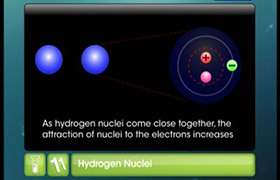CBSE Class 11-science Answered
Covalency of an element for example hydrogen, nitrogen, oxygen, fluorine is the total number of unpaired electrons in s or p orbitals.
Hydrogen for example (H®1s1) has only one unpaired electron and shows a covalency of one.
N atom (N→2s22px12py12pz1) has three unpaired electrons and shows a covalency of three.
O atom (O→2s22px22py12pz1) has two unpaired electrons and shows a covalency of two.
F atom (F→2s22px22py22pz1) has one unpaired electrons and shows a covalency of one.
If you observe these elements given above have only s and p orbitals in their valence shells and do not contain vacant d orbitals.
However elements like P, S, and Cl contain vacant d-orbitals and show different values of covalency in different covalent compounds.
It is called variable covalency and is due to the presence of vacant d-orbitals in the valency shell of these elements.
Some examples of elements showing different covalencies in compounds.
|
Elements |
Different covalencies |
Examples of Compounds |
|
Halogens(Other than fluorine) |
1 3 5 7 |
ICl ICl3 ICl5 ICl7 |
|
Sulphur |
2 4 6 |
SCl2 SF4 SF6 |
|
Phosphorus |
3 5 |
PCl3 PCl5 |
Variable covalency of phosphorus of P atom (3,5)
P in Ground state : 3s2 3px1 3py1 3pz1
Phosphorus in its excited state: 3s1 3px1 3py1 3pz13d1




